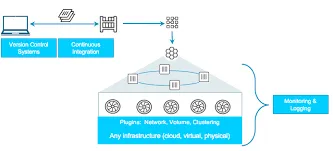Kubernetes is emerging as one of the best control planes in the context of modern applications and infrastructure. The powerful scheduler, which was originally designed to deal with the placement of pods on appropriate nodes, is quite extensible. It can solve many of the problems that exist in traditional distributed systems.
Kubernetes is fast becoming the preferred control plane for scheduling and managing jobs in highly-distributed environments. These jobs may include deploying virtual machines on physical hosts, placing containers in edge devices, or even extending the control plane to other schedulers such as serverless environments.
From bare-metal servers to virtual machines to the internet of things (IoT) devices to managed cloud services, Kubernetes has gone beyond containers and pods to tackle multiple provisioning and scheduling challenges.
Below are a few examples of this pattern:
Crossplane
Crossplane aims to standardize infrastructure and application management using the same API-centric, declarative configuration and automation approach pioneered by Kubernetes. It is a unified control plane that integrates seamlessly with existing tools and systems, and makes it easy to set policies, quotas and track reports.
Crossplane acts as a bridge between Kubernetes and traditional workloads such as databases, and even managed services in the public cloud. DevOps can declare external resources using the same YAML specification, along with the native Kubernetes applications. This approach encourages configuration as code by extending the versioning, continuous integration and deployment to non-Kubernetes resources.
#cloud native #ebook series article #kubernetes #profile
